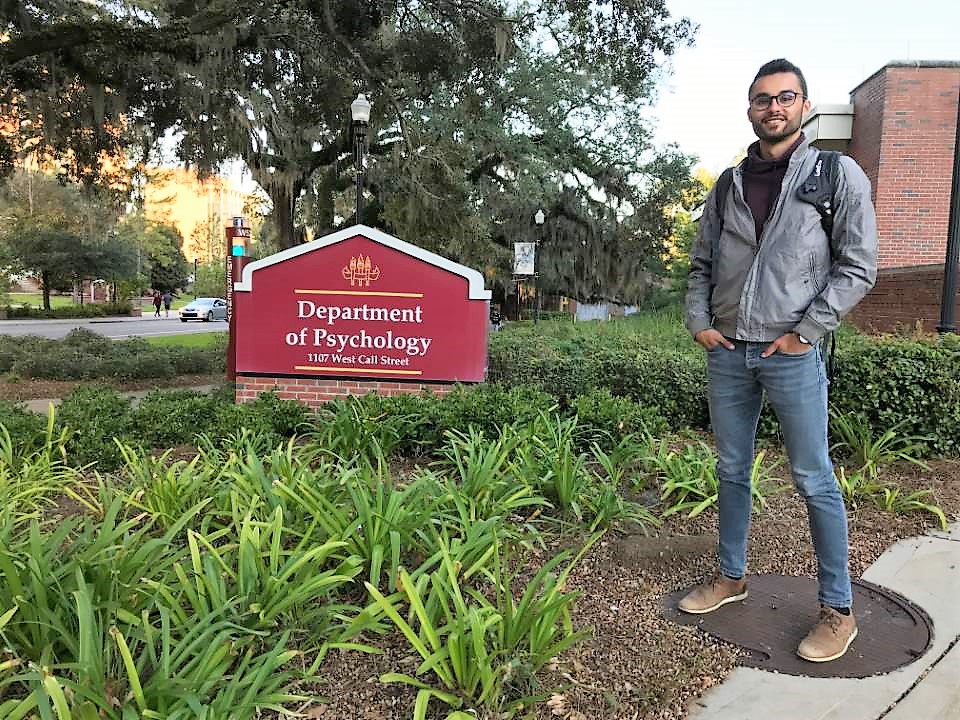Travel Grant Report by Ruddy Faure
26.11.2018, by Tina Keil in grant report
Vrije Universiteit Amsterdam, Netherlands; Visit at Florida State University
 in total, 9 pictures
in total, 9 pictures
Receiving the EASP travel grant helped me to visit Dr. Jim McNulty at Florida State University in Tallahassee during the fall semester 2018. During this research visit, Dr. McNulty and I collaborated on several projects that will be part of my PhD dissertation.
I first met Dr. McNulty in Granada, at the 2017 EASP conference. At the time, I had just started my PhD project, which investigates how implicit partner evaluations (i.e., one’s spontaneous affective associations toward the romantic partner) are formed and how they influence relational outcomes over time. Dr. McNulty is an expert in the field of close relationships and more specifically on the topic of implicit partner evaluations. During this first meeting, we had the opportunity to talk about our research interests, to exchange our views, and to discuss the possibility to visit his lab to collaborate together. Accordingly, I visited Dr. McNulty a year later, from mid-august until mid-December 2018. My primary goals for this 4-month research visit were to start a new research project on implicit ambivalence, to continue my ongoing projects that focus on the conditions under which people’s explicit relationship evaluations more closely aligned with their implicit partner evaluations, and to keep growing my network by attending research labmeetings, conferences, and more.
In line with these goals, my stay at Florida State University has been extremely beneficial. First, in a large dataset of newlyweds, Dr. McNulty and I had the chance to examine how implicit ambivalence (i.e., holding both strong positive and negative affective associations toward one’s romantic partner) may affect people’s romantic relationship. We found preliminary evidence that greater implicit ambivalence seems to translate into greater awareness of, and motivations to change, one’s relationship issues. Our goal is now to replicate and extend these findings, which will represent a new empirical chapter of my PhD dissertation. Second, drawing on dual-process theories, we combined dyadic datasets from The Netherlands and from North America to provide compelling evidence that people’s implicit partner evaluations more closely matched with their explicit evaluations when they are less motivated or able to engage in deliberate processing – a project that will be submitted soon for publication. Third, together with other researchers from Florida State University, we started collaborating on a new project involving experimental and field studies to further investigates the conditions under which implicit partner evaluations may influence relational outcomes. Finally, this research visit offered me the opportunity to meet with several scholars, present my research projects and ideas, engage in fruitful debates and extend my understanding of relationship science. Notably, I could attend several lab-meetings at the Florida
State University, all led by brilliant and inspiring researchers. Moreover, it allowed me to attend the 2018 SESP conference and meet new North American scholars. Furthermore, thanks to Dr. Emily Impett’s invitation, I have also been able to present my work at the University of Toronto, Mississauga (Canada) and receive tremendous feedback from many relationship researchers.
Overall, I had a wonderful time at the Florida State University. Therefore, I would like to thank all of those who contributed to this research visit. Foremost, I am extremely grateful to the EASP for supporting this experience and to Dr. Jim McNulty for his warm welcome, his kindness, his expertise and all his time dedicated to our weekly meetings. I am also sincerely thankful to Florida State University and its Psychology Department more generally, and to Dr. Emily Impett for her invitation in Toronto. Naturally, my gratitude also goes to my PhD supervisor, Dr. Francesca Righetti, and to the Vrije University Amsterdam for making this research visit possible.